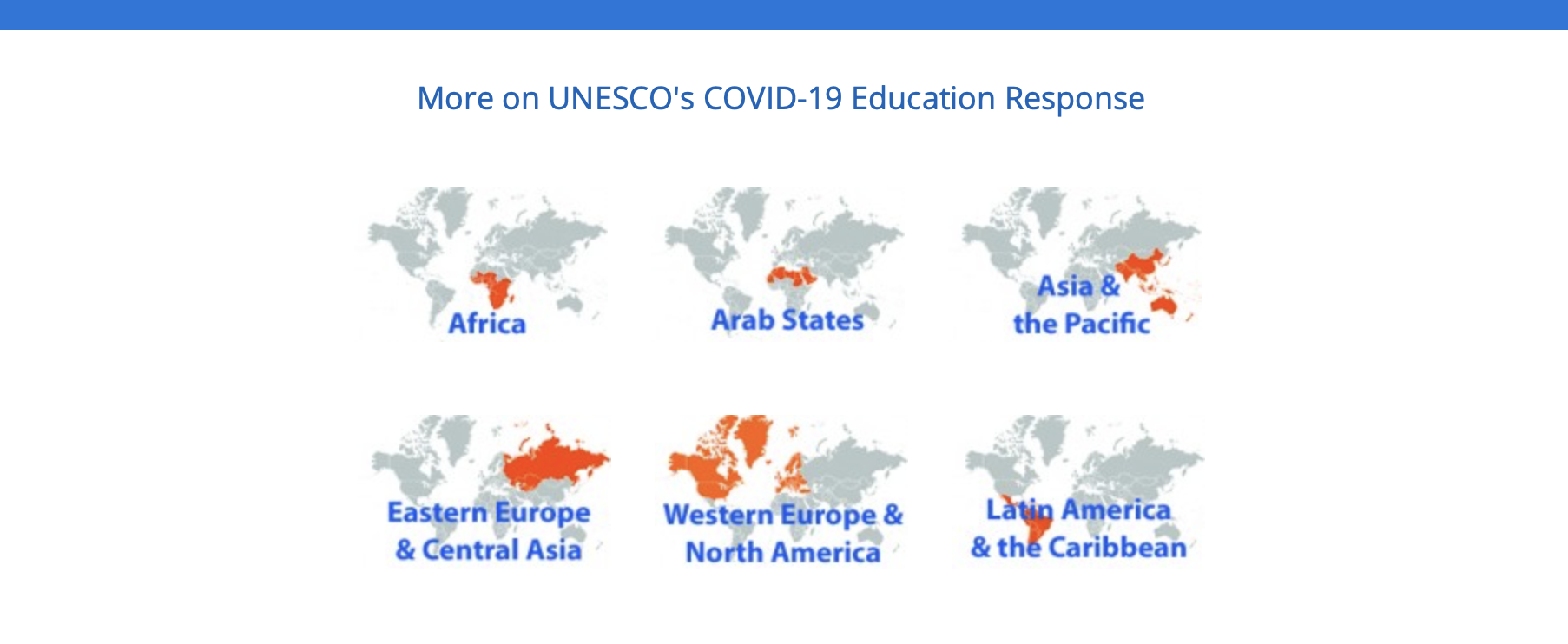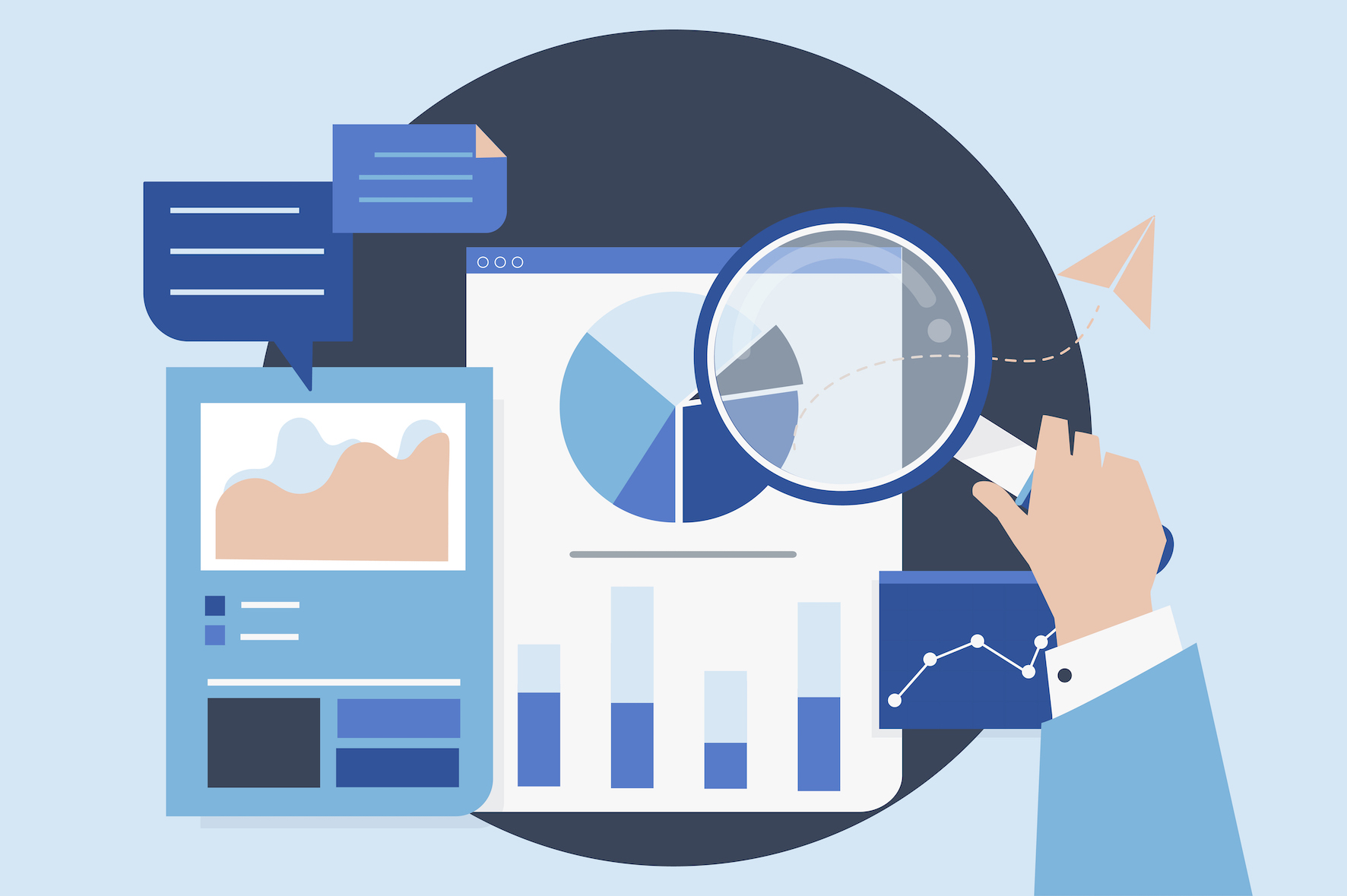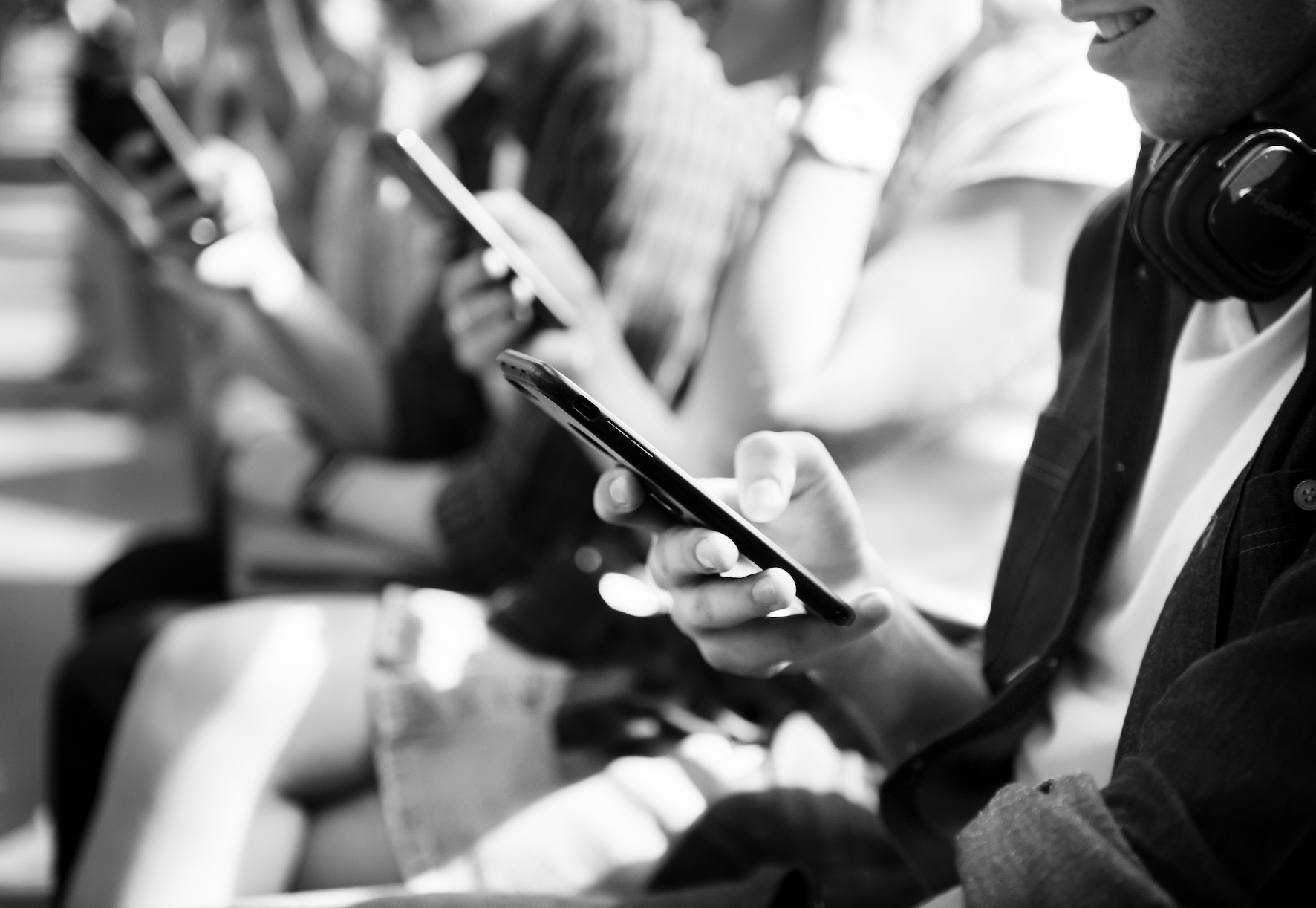UNESCO has worked with Ministries in affected countries to ensure learning through various channels, with the aim of responding to and mitigating the negative impact generated by the pandemic, especially among the most vulnerable communities. The effort began with the creation of the global coalition to help each country improve distance learning processes and reach the communities most at risk of exclusion. Inclusive distance learning solutions were disseminated according to the context of each region, for those with technology and Internet access and for those without it. Webinars are offered to all those involved in improving and promoting inclusive education. This is a way to pool information on the work being done in each of the countries. At the same time, and as an ideal complement, various thematic workshops for knowledge exchange have been conducted.
Among all the initiatives, the importance of the solutions proposed to combat the lack of Internet connection by students cannot be overstated. This is why the major mobile phone operators, which are part of UNESCO’s Global Education Coalition, have offered free access to online educational resources for students in virtually all regions of the world affected by school closures.
There are several educational platforms and tools that offer these materials and facilitate learning from home. UNESCO has incorporated them into a repository classified by area and country, all those programmes available for those families without Internet connection and has collected all the digital tools available for each region.
Sub-Saharan Africa has seen an increase in educational television programmes offered by national TV broadcasters. This is one of the foremost solutions to avoid the exclusion of those who cannot continue learning because they lack electronic devices and Internet access. Angola, Botswana, Burkina Faso, Cape Verde, Cameroon, Central African Republic, Congo, Djibouti, Gambia, Ghana, Guinea, Madagascar, Malawi, Mali, Mauritius, Mozambique, Niger, Senegal, Sierra Leone, South Sudan, Tanzania, Zambia and Zimbabwe. All the above countries have chosen to broadcast educational content through traditional channels such as radio and television.
Others have encouraged digital learning, because of their social context. They have opted for remote learning using digital educational platforms and resources in African countries like: Chad with applications such as EduTchad and GoClass; Ivory Coast with Ecole Numérique; Democratic Republic of Congo with the Voda Educ platform; Djibouti with the Menfop e-learning platform; Equatorial Guinea with the Escuela en casa application; Ethiopia has promoted the dissemination of electronic textbooks; in Gabon, XGEST, a tool that facilitates distance learning, was notable; in Guinea , M’Booré offers online courses for different subjects and age groups; in Rwanda, the Board of Education presented its content repository based on the national curriculum. Other countries that have implemented a distance learning strategy using platforms have included Nigeria, Senegal, South Africa and Uganda, among others. All these platforms have been developed by the Ministries of Education of each of the respective countries.
Unlike the Sub-Saharan Africa region, the Arab States, including those in North Africa, have opted to promote digital learning combined to a lesser extent with the broadcasting of educational programmes through national television channels. Algeria (ONEFD), Bahrain (EduNet), Egypt (Elearning and MOE E-Learning), Jordan (Darsak, Noorspace and Teachers’ Platform), Kuwait(E-learning portal), Lebanon (MEHE application), Libya, School-ly), Mauritania, Morocco (Taalimtice), Oman (MOHE, Ministry of Education platform), Palestine (It-Mohae), Qatar (Ministry of Education YouTube channel ), Saudi Arabia (Ministry Portal and Vschool platform), Syria (ECE Platform, Ministry Portal and YouTube channel), Tunisia (CNTE and Edunet) and the United Arab Emirates (Alef Education, EduShare, MOE Library, Swift Evaluation, etc), have chosen to promote remote learning platforms and to disseminate open educational resources for students’ learning, combined with the broadcasting educational programmes on television. Yemen and Iraq, because of the current social context, have opted to use traditional channels and YouTube.
The situation in the Asia-Pacific region is very similar to the one that has unfolded in the Arab region. Countries have opted for free applications, e-books and other digital educational content. Educational programmes on radio and television have also been broadcast, although to a lesser extent. Bangladesh has provided digital content and e-books. National Curriculum and Textbook Board, along with the a2i (Access to Information) Programme of the Prime Minister’s Office, began producing and dissemination of e-books for primary and secondary education. For distance learning, a platform with interactive content covering the main subjects was set up in accordance with the primary education curriculum. In Thailand, the Office of the Private Education Commission (OPEC) developed an online learning platform through which it provides all academic content to primary and secondary students. Another country focused on providing primary and secondary school students with all educational resources is China, through its National Public Service Platform for Educational Resources (Eduyun). In India, several websites were set up by the Ministry of Human Resources Development. These initiatives include the creation of the National Digital Library of India, which provides resources by subject and academic level.
UNESCO highlights two learning platforms in Indonesia (Rumah Belajar and SPADA). As for Malaysia, firstly, it offered teachers a collection of online lessons through EducawebTV. Secondly, its Ministry set up a learning platform (MoE-DL). Another country offering a website aimed at teachers is the Philippines, which through DepEd Commos supports public school teachers in distance learning modalities. In Japan , Future Classroom, a repository of useful sites for students, is a notable resource, as is MEXT, an e-learning platform that classifies content by year and subject. A similar strategy was implemented by Korea, with three prominent websites EBS, KERIS and Onschool. Pakistan, meanwhile, has focused on higher education by offering a resource repository organised by subject (Open Courseware). In the Seychelles, UNESCO underscores the Ministry of Education’s learning website for primary and secondary school students. Other countries have chosen to train students through their respective social media profiles. The Cambodian Ministry of Education, meanwhile, streams lessons for each subject and year through its Facebook profile.
Only a few countries have opted for implementing a learning strategy through traditional channels, among them: Vietnam, which has opted not only for learning through websites that promote distance education such as the one developed by the Ministry of Education (Taphuan), but has also broadcast lessons through national and local television channels to ensure learning for all those students who do not have electronic devices in their homes, mainly primary school students. Iran has presented a similar scenario. There, UNESCO highlights the SHAD learning management app and the broadcasting of educational programmes through television channels. The educational landscape in Nepal has been very different from that of other countries, and the country’s circumstances only allow educational content to be broadcast through Radio Jingle (Radio Annaapurna Kaski 93.4).
Moving on to Eastern Europe and Central Asia. In this region, the UNESCO Global Education Coalition highlights the following digital learning platforms: in Armenia, through Dasaran, the Ministries of Education, Science and Culture provide free access to an online encyclopaedia with digital academic content for primary and secondary schools. Another of the websites provided by the Ministry of Education is Elearning. The last one is Harevar, a website with educational resources that is continuously updated. In Azerbaijan there are three portals that serve as repositories E-reus, Elektron Derslik (dedicated to e-books) and video.edu.az (which includes a collection of video lessons). Sloka za zivot, is the distance learning platform chosen by Croatia, with content classified by year. In Estonia, Education-nation, the official website of the Ministry of Education, presents a compilation of platforms for learning from home. EL.GE, Email.mes and Feedc Edu are the three leading portals in Georgia. In Hungary the Ministry of Education offers a collection of online resources through Oktatas. Other countries in this region that have chosen to promote learning from home include Romania with Educred, Manuale and Telescoala; Slovenia (SIO), Slovakia (ucimenadialku.sk and Viki), Turkey (with the Ministry of Education’s remote education platform), etc.
Among the noteworthy initiatives devised by Kazakhstan for educators are the Uztaz and Kundelik platforms (websites providing teachers with teaching materials). In addition is the national open education platform established by Kazakhstan’s leading universities that offer MOOCs of core subjects in Kazakh and Russian. Among the countries that have opted for social media channels, the Ministry of Education of Ukraine has streamed lessons through its YouTube channel. Other countries have chosen to broadcast educational content solely by radio and television. This was the case in Afghanistan, the Czech Republic, Moldova, Northern Macedonia and Serbia.
UNESCO’s classification of platforms and tools is organised by regions presenting similar scenarios. Bearing in mind that each country has set out its own education policy, the aim of the Global Education Coalition is to bring together all the efforts made in the different countries and thus be able to pool the different tools and initiatives developed.
The educational landscape in Western Europe has been very similar to that in North America, with the main focus on remote learning. In Austria, two platforms promoted by the Ministry of Education(BMBWF and Eduthek.at) stand out. In Belgium, three tools offer pedagogical and educational resources to students, teachers and families (Enseignement,be, e-classe.be and Klascement). In France, the National Centre for Distance Learning provides a virtual classroom system through the website Ma clase à la maison. In Spain, the Ministry of Education, together with the National Institute of Technology and Professional Development (INTEF), has made the following platforms available to teachers and families: Educlan (television content developed by Radio Televisión Española (RTVE) which includes educational resources during the period of lockdown and suspension of classes due to the coronavirus, available on its website), INTEF (the INTEF website also offers content to support remote learning) and Procomún (a portal with more than 100,000 educational resources and learning materials offered by the Ministry and collaborators from the education community).
Among the European platforms for distance learning during the coronavirus crisis, we note those of Italy (INDIRE webinars and Nuovo Coronavirus webpage), Malta(Curriculum.gov.mt), Sweden (Skolahemma), Norway (Feide), Switzerland(Eduport.ch) and the United Kingdom (Dfe Online Education Resources). Germany is especially noteworthy, with its multiple tools, with UNESCO including a total of 14 platforms aimed at teachers, parents and students. Bayerischer Rundfunk: Schule daheim – Online lernen (database with educational videos based on the academic curriculum), Bildungsserver Berlin-Brandenburg (website with recommended online resources for distance learning), Bildungsserver Mecklenburg-Vorpommern (database to support teachers in their daily management of remote learning by providing them with materials),Hamburger Bildungsserver (repository of digital educational tools and resources), Hessischer Bildungsserver (a database of content organised by course and subject), Landesbildungsserver Baden-Württemberg (a platform with resources and guidance for distance learning), Landesmedienzentrum Baden-Württemberg (a portal for content, tools, seminars and consultations in support of remote learning), Unterstützungsangebot für Lehrerinnen und Lehrer in Phasen des Distanzlernens (a guide for teachers in support of distance learning). Other German platforms offering educational resources to teachers and students are: Thüringer Schulportal, Online Schule Saarland, Mebis- Landesmedienzentrum Bayern, weBBcloud, etc.
Moving to the American continent, the Canadian system is very similar to the one proposed in Germany. Canada has also been one of the countries with the greatest educational range of tools and resources for distance learning. UNESCO has compiled a total of 16 portals: Alberta, the Alberta Distance Education Centre, Curriculum Nova Soctia (Nova Scotia’s official platform with resources aligned to the English and French curriculum), LearnAlberta.ca (with more than 4000 digital resources), Manitoba_m_learning at home (which includes all the content provided by the Ministry), Newfoundland and Labrador (website of the Centre for Distance Learning and Innovation, dedicated to the development of higher education distance learning programmes), New Brunswick (resources for families with students in primary and secondary education), Nunavut_Angirrami Illinniarniq (website with free access to educational resources used in schools), Ontario Learn at home (repository of digital resources in English to facilitate remote learning in the State of Ontario), Quebec Open School (official learning platform of the State of Quebec), Saskatchewan (portal dedicated to teachers and students in both English and French), etc.
In Latin America and the Caribbean, the education policy of the countries in this period of pandemic has been characterised by the dissemination of educational resources through a range of channels. As in Africa, they have had to devise strategies to cover those students and families who do not have Internet connectivity or digital devices to access the learning platforms provided. Not only have they implemented numerous initiatives and platforms to encourage remote learning, but they have also provided educational programming in accordance with teaching plans, through traditional media such as radio and television. According to UNESCO, this has been the case in Colombia where, through the programme Profe en Casa, the broadcaster Señal Colombia broadcasts an hour of educational content daily on television and radio. The country also set up three platforms: 3,2,1 Edu-acción (the Public Media System together with the Ministry of Education created this portal with educational content for children and young people from all over the country), Aprender digital (a compilation of resources, guides and tools to support teachers in creating content and teaching remotely), and Colombia Aprende (a platform created by the Ministry of Education to support teachers, families and students in the process of distance learning during the Covid-19 outbreak). In Cuba there are a total of 49 educational programmes with the contents of the various courses, which alternate schedules for primary education and for the rest of the levels. The CubaEduca platform integrates all the contents and services related to education in the country.
The context in Venezuela is different. The Education Ministry broadcasts the programme Cada Familia Una Escuela on the “Venezolana de Televisión” channel. Numerous initiatives and platforms have been developed in Latin America. Among the platforms with educational resources and materials for teachers, students and families, the following countries are worth noting: In Argentina, the Biblioteca Digital portal allows teachers and students to access more than a hundred classic books and novels. Another platform is Seguimos educando, which provides video content and lessons by subject and year for primary and secondary schools, as well as materials to help teachers prepare their classes. In Brazil, the government launched an initiative that compiles free educational resources from pre-school to university level, called Banco Internacional de Objetos Educacionais. In Chile, Aprendo en línea is a platform that offers pedagogical resources for students from the first year of primary school to the fourth year of secondary school.
Aprendo en casa and Caja de herramientas are the two portals highlighted by UNESCO in Costa Rica. These two platforms were created by the Ministry of Education for primary and secondary students, providing resources and distance learning, respectively. Another of the platforms they have called Aprendo en casa is the one promoted by the Guatemalan Ministry of Education, which offers guidance and other documents aimed at students from pre-school to secondary school. Another portal is DIGECADE, a learning website with resources for secondary school teachers. In Peru , notable resources include Aprendo en casa and Peru Educa, both initiatives of the Ministry of Education. In Uruguay, Plan Ceibal provides accessible resources for teachers and students. In Paraguay, a resource kit was devised to support teachers and educational centres with materials by making available a digital library. They also offer content and activities for students and teachers through the Tu escuela en casaplatform. In Mexico, there are four main platforms: Aprende 2.0 (created by the Ministry of Public Education to promote the use of ICT and foster digital skills), Aprende en casa por TV y en línea (a programme launched by Mexico’s Ministry of Public Education, which broadcasts TV lessons and resources to support learning from home), Libros de textos digitales and Telesecundaria (a system of text book and secondary education programmes in rural areas of the country). In Panama, the Ministry of Education offers online courses for pre-school, primary and secondary school pupils through Educapanama. In Honduras, Educatrachos is a platform that offers activities, tools and resources in different formats, to be used by teachers and students.
The interruption of the school year throughout the world due to Covid-19 has established new approaches to the development of learning processes. More than 1 billion students have been affected by school closures. And more than 9 million teachers have been affected. Sub-Saharan Africa has emerged as one of the most disadvantaged in the world, with a total of 6.4 million teachers in primary and secondary education not trained in distance learning. In Central and South Asia, a quarter of teachers, 24.5% of the total, have been affected. In Latin America and the Caribbean, the figure is 894,000 teachers. Agencies such as UNESCO have supported countries in their efforts to reduce the impact of school closures, especially on the most vulnerable and disadvantaged communities. UNESCO has compiled and shared all the platforms and tools launched by the Ministries of Education in each of the countries, thus helping to take a snapshot of the educational landscape in each region of the world.
For more information, see the website:







